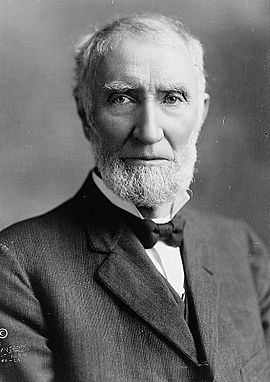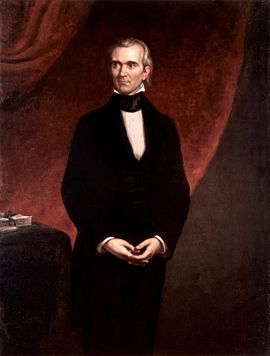Speaker of the United States House of Representatives facts for kids
Quick facts for kids Speaker of the United States House of Representatives |
|
|---|---|

Seal of the speaker
|
|
| United States House of Representatives | |
| Style |
|
| Seat | United States Capitol, Washington, D.C. |
| Nominator | Party caucus / conference (primarily) |
| Appointer | House of Representatives |
| Term length | At the House's pleasure; elected at the beginning of the new Congress by a majority of the representatives-elect, and upon a vacancy during a Congress. |
| Constituting instrument | Constitution of the United States, article I, § 2, cl. 5 |
| Formation | March 4, 1789 |
| First holder | Frederick Muhlenberg |
| Succession | Second (3 U.S.C. § 19) |
| Salary | $223,500 annually |
The Speaker of the United States House of Representatives is a very important leader in the United States House of Representatives. This person is often called the Speaker of the House. The job started in 1789, as set out in the U.S. Constitution.
By tradition and rules, the Speaker is the main political and rule-making leader of the House. They are also the head of the political party that has the most members in the House. Plus, they manage the daily work of the House. Because of these many duties, the Speaker usually doesn't lead debates every day. Other members of the majority party do that. The Speaker also doesn't usually join in floor debates.
The Constitution doesn't say the Speaker must be a current member of the House. However, every Speaker so far has been. As a member, the Speaker also represents their home district and can vote on laws. The Speaker is second in line to become president, right after the Vice President.
The current Speaker of the House is Mike Johnson. He is a Republican from Louisiana.
Contents
Choosing the Speaker
The House of Representatives chooses its Speaker in a special election. This happens at the start of every new Congress, which is every two years after a general election. It also happens if a Speaker leaves office early because they resign, pass away, or are removed.
When a new Congress begins, the people who vote for Speaker are new representatives. A Speaker must be chosen before any other official work can happen. The House cannot start making laws until a Speaker is elected.
Since 1839, the House has elected Speakers by a "roll call vote." This means each member's vote is recorded. Before this vote, each political party usually picks one person from their senior leaders to be their candidate for Speaker. To become Speaker, a candidate needs to get more than half of the votes from the members who are present and voting. If no one gets enough votes, they keep voting until a Speaker is chosen.
Most representatives vote for the candidate their party has chosen. This is because the election usually shows which party has the most members and will control the House. If a representative votes for someone from the other party, they might face serious problems. For example, in 2001, Democrat James Traficant voted for Republican Dennis Hastert. Because of this, the Democrats took away his special standing and his spots on important committees.
After being elected, the new Speaker takes an oath of office. The "dean of the House" gives the oath. This is the member who has served in the House the longest. It's also a tradition for the old Speaker, or the leader of the minority party, to give the Speaker's gavel (a small hammer) to the new Speaker. This shows a peaceful change of power.
Can Non-Members Be Speaker?
The Constitution doesn't clearly say that the Speaker must be a current member of the House. So, some people think it's possible for someone who isn't a member to be elected. In the past, some representatives have voted for people who were not in the House at the time. However, every person who has been elected Speaker has always been a member of the House.
This idea has been talked about for hundreds of years. Most experts today believe a non-member could be Speaker. But not everyone agrees.
Acting Speaker (Speaker pro tempore)
The Speaker can choose another member to act as "Speaker pro tempore" (which means "for the time being"). This person leads the House when the Speaker is away. Usually, this acting role lasts for no more than three days. But if the Speaker is sick, the acting Speaker can serve for up to ten days if the House agrees. The House can also approve an acting Speaker to sign bills for a certain time.
An acting Speaker can also be chosen if the Speaker's job becomes empty. This could happen if the Speaker passes away, resigns, or is removed. To prepare for this, the Speaker must make a secret list of members who can temporarily serve as Speaker. This list is given to the Clerk of the House. The names on the list are only made public if the Speaker's job becomes empty. This "succession list" was started in 2003 after the September 11, 2001 attacks. It helps make sure the government can keep working. The rules say the first person on the list will act as Speaker until a new one is elected.
In October 2023, Kevin McCarthy was removed as Speaker. This was the first time in history a Speaker was successfully removed by the House. Patrick McHenry was the first name on McCarthy's secret list. He became the acting Speaker. The rule was meant for a short time until a new Speaker was elected. However, the House rules don't set a limit on how long an acting Speaker can serve.
History of the Speaker's Role
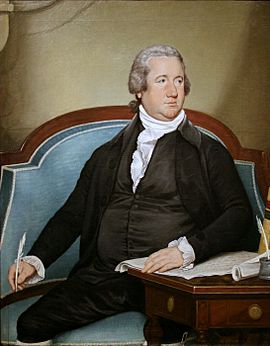
The very first Speaker of the House was Frederick Muhlenberg from Pennsylvania. He was elected on April 1, 1789. He served two times, from 1789 to 1791 and again from 1793 to 1795.
The Constitution doesn't explain what the Speaker's job is. So, the role has changed a lot over time, based on traditions.
The 1800s
Early Speakers mainly kept order and followed the rules. But the job became much more powerful under Henry Clay (1811–1814, 1815–1820, and 1823–1825). Clay was different because he took part in debates. He used his power to help pass laws he wanted, like declaring the War of 1812. When no one won enough votes in the 1824 presidential election, the House had to choose the president. Speaker Clay helped John Quincy Adams win instead of Andrew Jackson.
After Clay, the Speaker's power went down for a while. Elections for Speaker became very difficult. Before the Civil War, different groups nominated their own candidates. This made it hard for anyone to get enough votes. For example, in 1855 and 1859, it took two months to choose a Speaker. Speakers often served for very short times back then. Only James K. Polk later became president of the United States.
By the late 1800s, the Speaker's job became very strong again. A big reason for this was that the Speaker was also the head of the Rules Committee. This committee became one of the most powerful in the House. Speakers like Thomas Brackett Reed (1889–1891, 1895–1899) used their power a lot. Reed, called "Czar Reed" by his opponents, stopped the minority party from blocking bills. He did this by counting members who were present but refused to vote towards a quorum (the number of members needed for a vote to be valid). This helped the Republicans pass their laws.
The 1900s
The Speaker's power reached its highest point with Joseph Gurney Cannon (1903–1911). Cannon had huge control over how laws were made. He decided what the House would discuss, chose members for all committees, and picked committee leaders. He used his power strongly to make sure Republican ideas became law. But in 1910, Democrats and some unhappy Republicans worked together. They took away many of Cannon's powers, like choosing committee members.
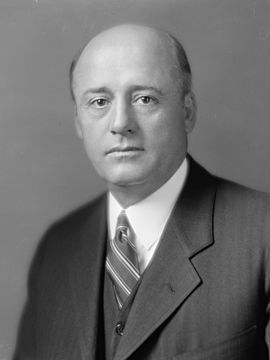
One of the most important Speakers was Democrat Sam Rayburn. He served as Speaker for the longest time in history, from 1940 to 1947, 1949 to 1953, and 1955 to 1961. He quietly worked with House committees to help shape many bills. He also helped pass important laws and programs supported by Presidents Franklin D. Roosevelt and Harry Truman.
After Rayburn, Democrat John W. McCormack (1962–1971) was Speaker. He had less influence because younger Democrats disagreed with him. In the mid-1970s, the Speaker's power grew again under Democrat Carl Albert. The Rules Committee became a tool of the party leaders again. In 1975, the Speaker also got the power to appoint most of the members of the Rules Committee. This made the Speaker even more powerful.
Albert's successor, Democrat Tip O'Neill, was a well-known Speaker. He was openly against the policies of President Ronald Reagan. O'Neill served continuously as Speaker for the longest time, from 1977 to 1987. He challenged Reagan on spending and other issues. Republicans tried to campaign against O'Neill in elections, but Democrats still kept control of the House.
In 1994, the Republicans took control of the House after 40 years. This was led by Newt Gingrich with his "Contract with America" plan. Speaker Gingrich often argued with Democratic President Bill Clinton. This led to a government shutdown, where Clinton was seen as winning the argument. Gingrich's leadership became weaker after this and other problems. He didn't run for a third term as Speaker after Republicans lost House seats in 1998. His replacement, Dennis Hastert, was chosen as a compromise. Hastert played a less public role than other Speakers.
The 2000s
After the 2006 elections, Democrats won control of the House. Nancy Pelosi became Speaker on January 4, 2007. She was the first woman to hold this important job. During her time as Speaker, Pelosi was a key person behind many of President Barack Obama's big plans. Republicans campaigned against her, and they won back control of the House in 2010.
John Boehner became Speaker in 2011 and was re-elected twice. His time as Speaker was marked by many disagreements with conservative members of his own party. These fights were about healthcare and spending. Boehner resigned in 2015. The disagreements continued under his replacement, Paul Ryan.
After the 2018 elections, Democrats won a majority again. Nancy Pelosi was elected Speaker once more on January 3, 2019. She became the first Speaker to return to the job since Sam Rayburn in the 1950s. After the 2022 elections, Republicans won control of the House. Pelosi did not seek a leadership role in the new Congress. The Democratic Party named her "Speaker Emerita."
Important Speaker Elections
Throughout history, there have been some very difficult Speaker elections. For example, in 1839, the House couldn't even start the election for Speaker for two weeks. This was because of a fight over who was truly elected from New Jersey. Two different groups claimed to be the rightful representatives. This problem was big because it would decide which party had the most members. They finally agreed to not let either group vote, and a Speaker was chosen.
Another long fight happened in 1855. The old Whig Party had broken apart, and no single party had taken its place. It took almost two months of voting before Nathaniel Prentice Banks was finally elected Speaker.
In 1859, the House faced a similar problem. The Republican candidate, John Sherman, was not accepted by southern members because of his views against slavery. After many votes, a compromise candidate, William Pennington, was finally elected Speaker in February 1860.
In December 1923, Republican Frederick H. Gillett needed nine votes to be re-elected. Some Republicans refused to support him at first. They only agreed after they were promised a spot on the House Rules Committee and that changes to House rules would be considered.
In 1997, some Republican leaders tried to make Speaker Newt Gingrich resign. But Gingrich refused. After the 1998 elections, where Republicans lost seats, Gingrich did not run for Speaker again. Dennis Hastert was then chosen as Speaker.
In 2006, Democrats won control of the House. On November 16, 2006, Nancy Pelosi was chosen as the Speaker-designate by House Democrats. When the 110th Congress started on January 4, 2007, she was elected as the 52nd Speaker. She was the first woman to hold the job. Pelosi served as Speaker for two Congresses, and then again for two more later on.
The Speaker election in January 2023 was very long. It happened after the 2022 elections, where Republicans won a small majority. Because of disagreements within the Republican party, no one got enough votes on the first try. This meant they had to vote many times, which hadn't happened since 1923. Kevin McCarthy finally won on the 15th vote. But in October 2023, McCarthy was removed as Speaker. This was the first time in history that a Speaker of the House was successfully removed by the House.
The Speaker's Party Role
The Constitution doesn't say the Speaker has to be part of a political party. But over time, the Speaker has become a very strong party leader. Unlike Speakers in some other countries, the U.S. Speaker is the head of the majority party in the House. They are even more important than the majority leader. Even though the Speaker can vote, they usually don't take part in debates.
The Speaker's job is to make sure the House passes laws that their party supports. To do this, the Speaker can decide when each bill will be discussed. They also lead their party's main committee in the House.
When the Speaker and the President are from the same party, the Speaker might play a less public role. For example, Dennis Hastert was very quiet when George W. Bush was president. However, sometimes the Speaker plays a very big role, pushing their party's plans. Henry Clay helped John Quincy Adams become president. Sam Rayburn helped pass many laws under President Franklin Delano Roosevelt. Joseph Gurney Cannon was known for making it hard for the minority party to have a say. More recently, Speaker Nancy Pelosi helped push for healthcare reform under President Barack Obama and for spending on infrastructure and climate under President Joe Biden.

When the Speaker and the President are from different parties, the Speaker's public role usually grows. As the highest-ranking member of the opposition party, the Speaker often becomes the main public opponent of the President's plans. In this situation, the Speaker might try to block the President's ideas. For example, Thomas Brackett Reed made sure Democrats couldn't stop Republican laws. Joseph Cannon used his power to block the more progressive members of his own party.
More recent examples include Tip O'Neill, who spoke out against President Ronald Reagan's policies. Newt Gingrich had big arguments with President Bill Clinton over domestic policy. Nancy Pelosi disagreed with President George W. Bush about the Iraq War. John Boehner argued with President Barack Obama about the budget and healthcare. And Nancy Pelosi again refused to support President Donald Trump on funding for a border wall.
Leading the House
As the person who leads the House of Representatives, the Speaker has many powers. They are also the highest-ranking legislative official in the U.S. government. The Speaker can let another member lead the House as an acting Speaker when they are away. This is always a member from the same political party. For important debates, the acting Speaker is usually an experienced member of the majority party. For less important times, newer members might lead to gain experience.
The Speaker must give the House Clerk a list of members who can act as Speaker if the Speaker's job becomes empty or if they can't do their duties. This list is kept secret.
On the House floor, the person leading is always called "Mister Speaker" or "Madam Speaker." This is true even if they are just an acting Speaker. To speak, members must get permission from the person leading. The person leading also makes decisions on all questions about rules. But the whole House can challenge these decisions. The Speaker is also in charge of keeping order in the House. They can tell the Sergeant-at-Arms to make sure House rules are followed.
The Speaker's powers go beyond just leading debates. They have a lot of power over how committees work. The Speaker chooses nine of the thirteen members of the powerful Rules Committee. The rest are chosen by the minority party leader. Also, the Speaker appoints all members of special committees. When a bill is introduced, the Speaker decides which committee will review it.
As a member of the House, the Speaker can take part in debates and vote. Usually, the Speaker only votes if their vote would decide the outcome. They also vote on very important matters, like changes to the Constitution or major laws. The Speaker can vote on any issue in the House. They must vote if their vote would decide the outcome or if the House is voting by secret ballot.
Other Important Jobs
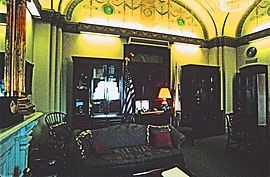
Besides being the political leader of the House and representing their district, the Speaker also has other important jobs:
- They oversee the main officers of the House, like the Clerk and the Sergeant-at-Arms.
- They lead the House Office Building Commission.
- They appoint the House's parliamentarian (rules expert), historian, and other officials.
- They manage the House's TV and radio broadcasting system.
- They receive reports from the President and government agencies.
- They receive official letters from the Vice President and Cabinet members about whether a President can do their job, as stated in the Twenty-fifth Amendment.
The Speaker is also second in line to become president, after the Vice President. This is under the Presidential Succession Act of 1947. So, if both the President and Vice President could not do their jobs, the Speaker would become acting president. They would first have to resign from the House and as Speaker.
After the Twenty-fifth Amendment was passed in 1967, it became less likely for the Speaker to become acting president. This amendment created a way to fill a Vice President's job if it became empty. However, in 1973, Vice President Spiro Agnew resigned during the Watergate scandal. Speaker Carl Albert was suddenly next in line to be acting president. This lasted until Gerald Ford became Vice President. Albert was also next in line when Ford became President after Nixon resigned in 1974, until Nelson Rockefeller was confirmed as Vice President.
See also
 In Spanish: Presidente de la Cámara de Representantes de los Estados Unidos para niños
In Spanish: Presidente de la Cámara de Representantes de los Estados Unidos para niños



